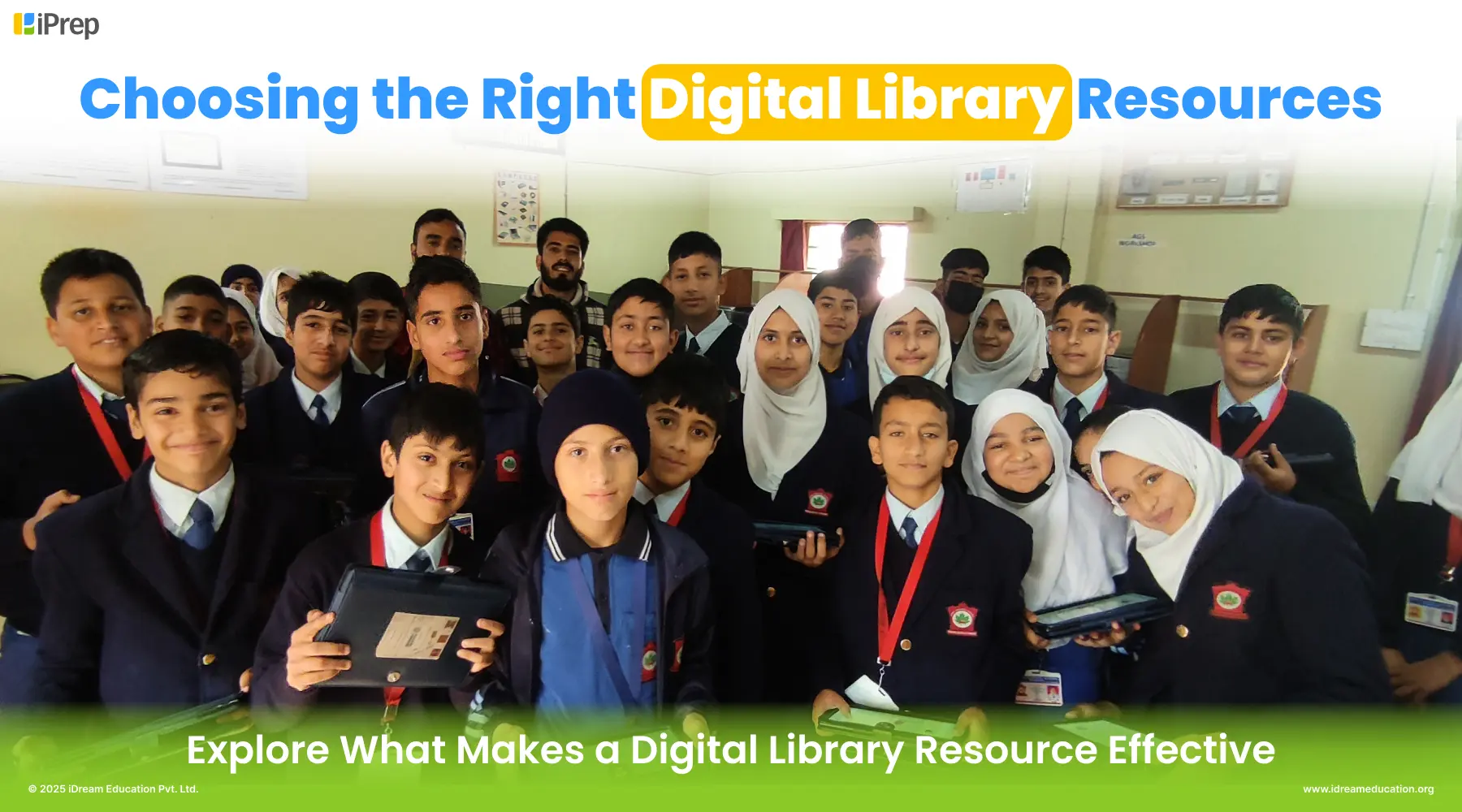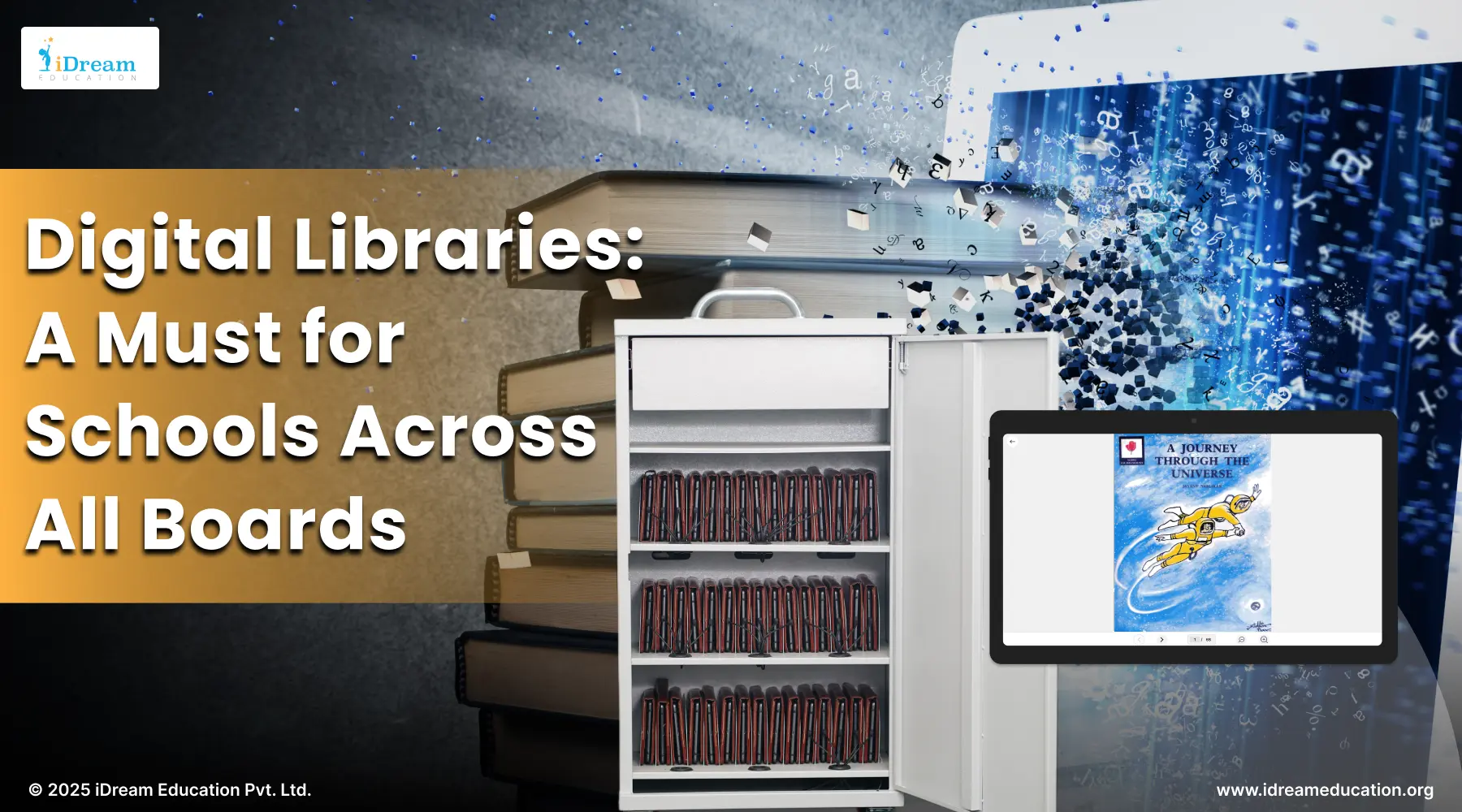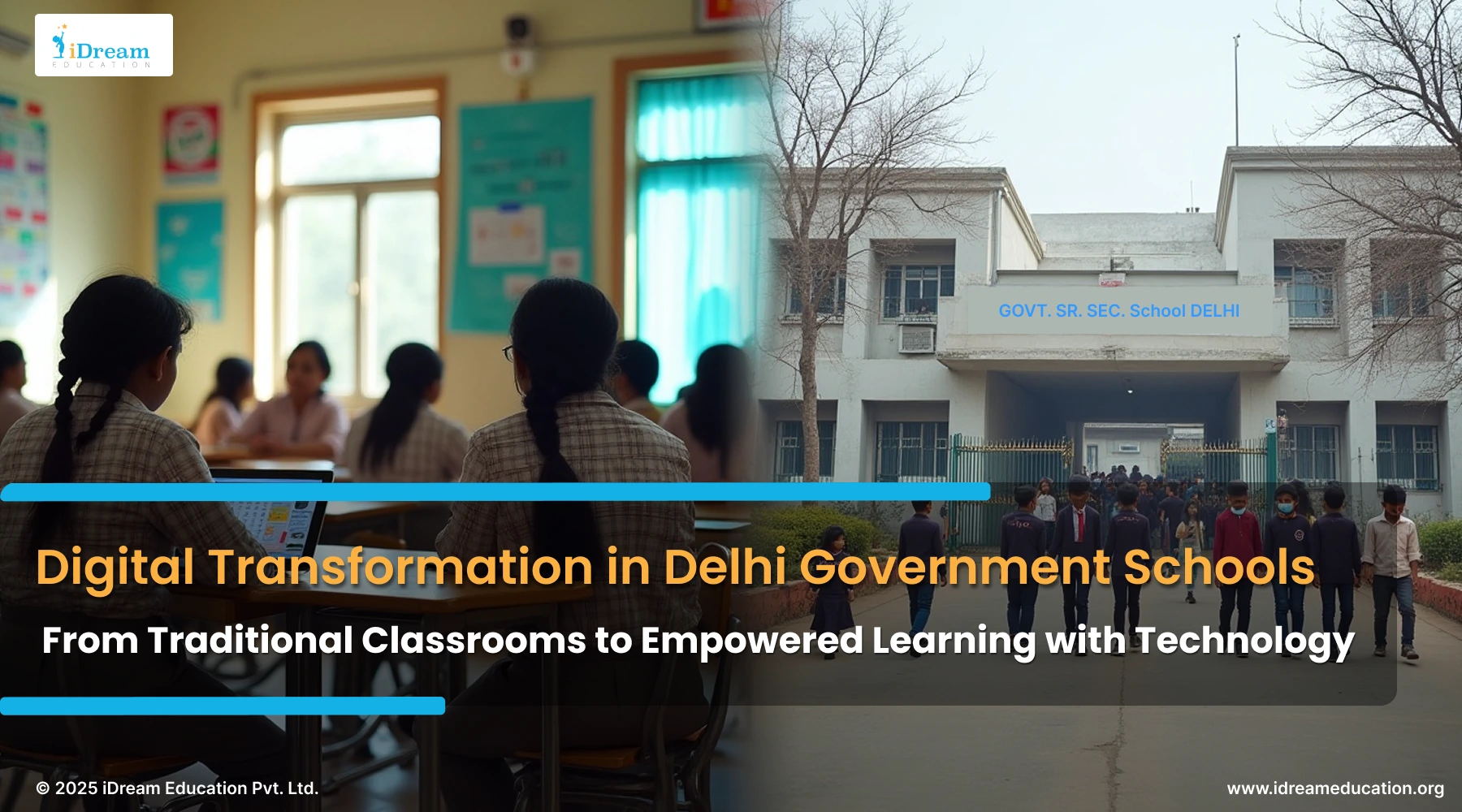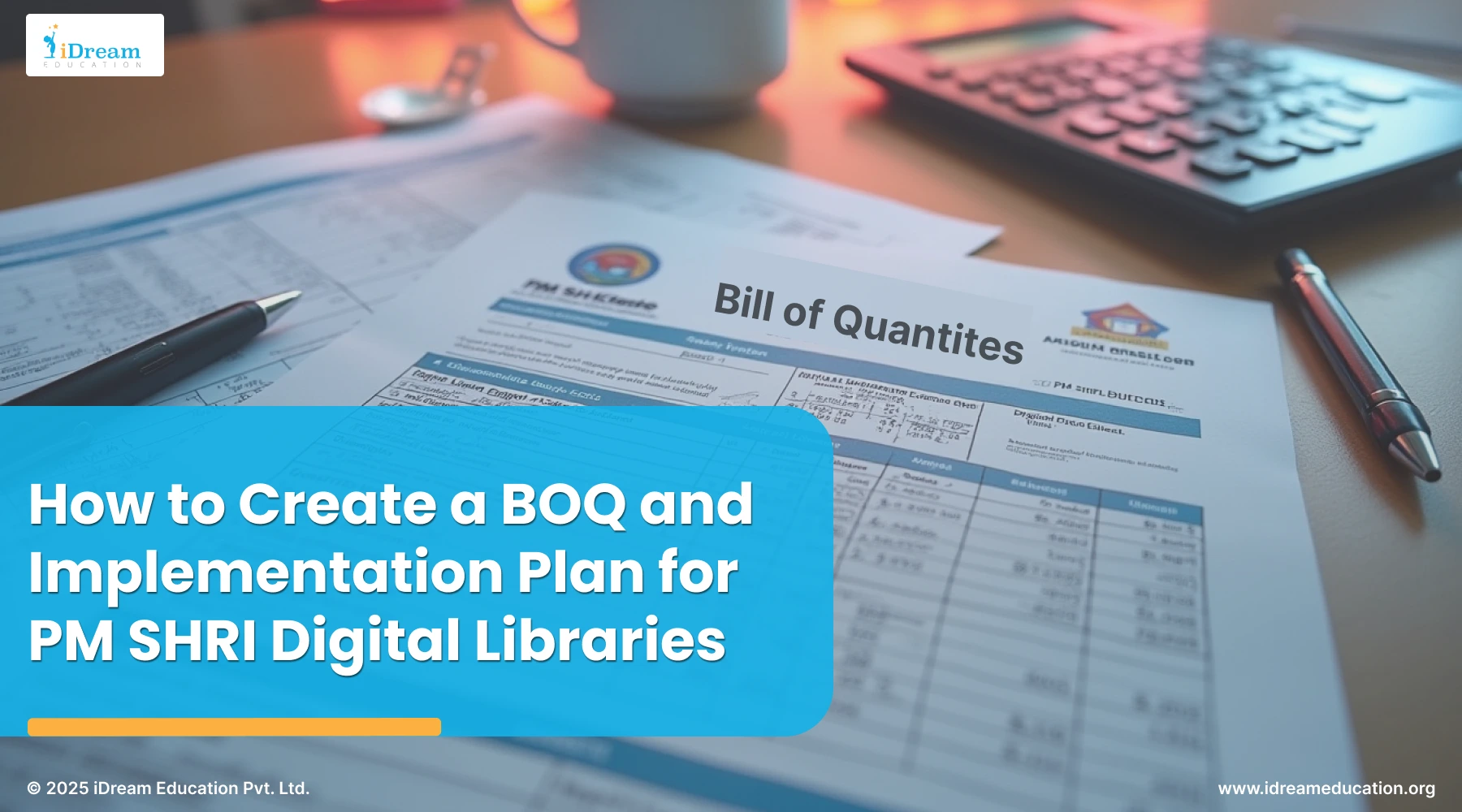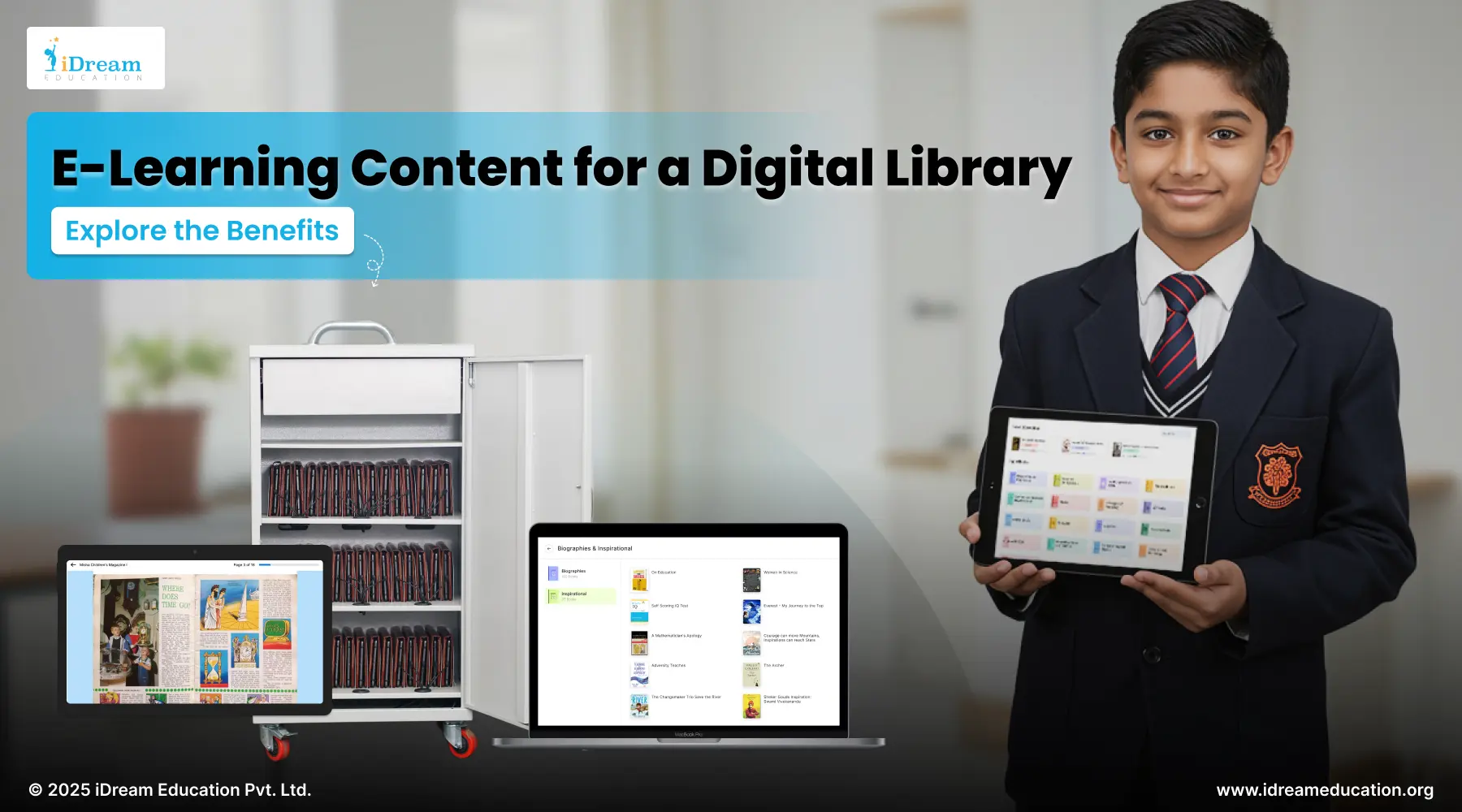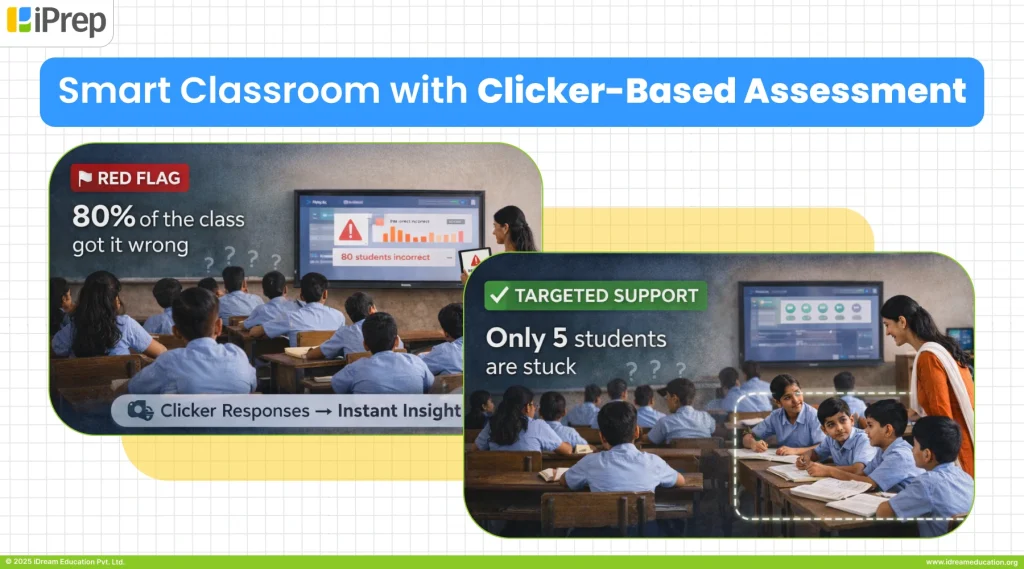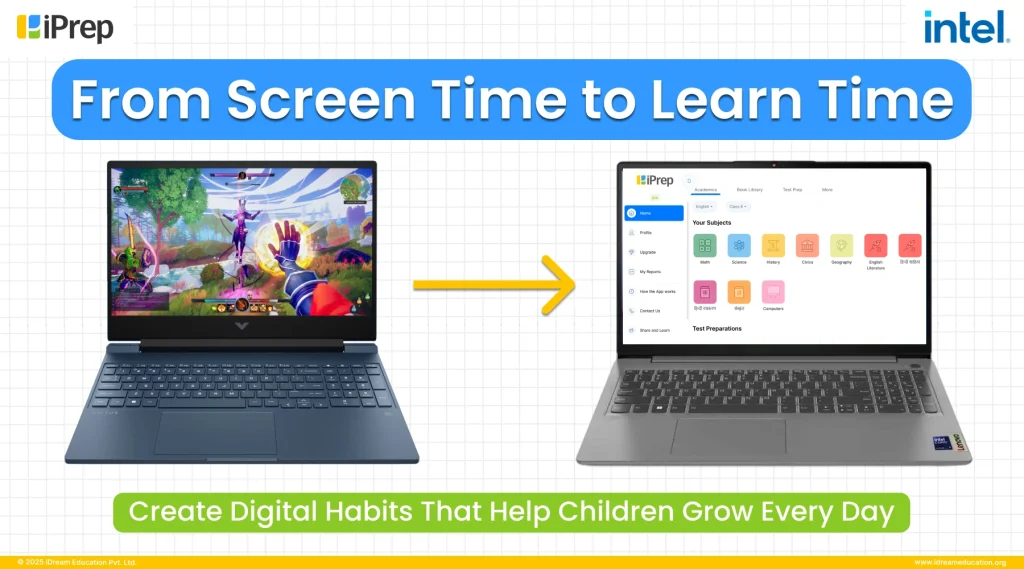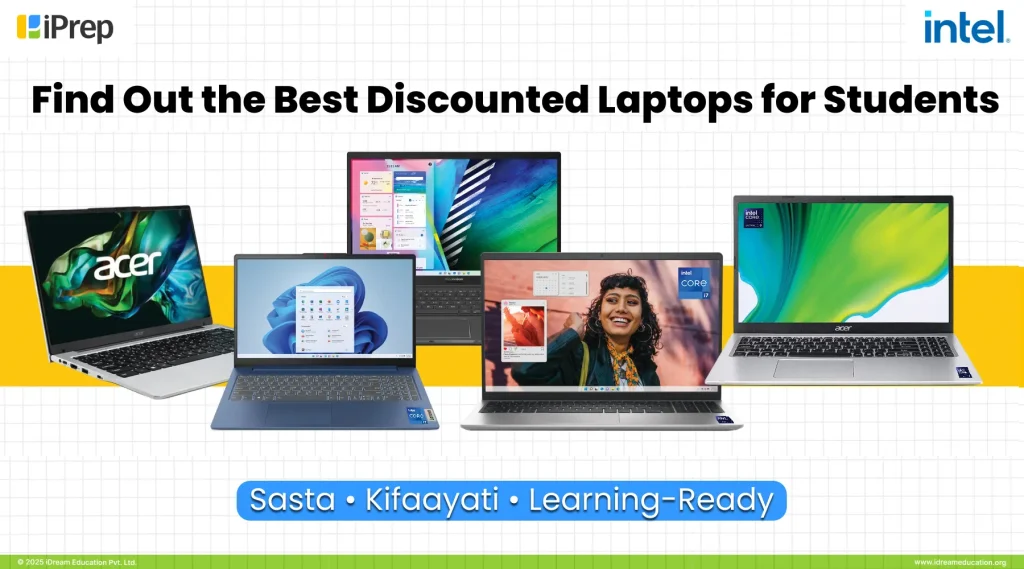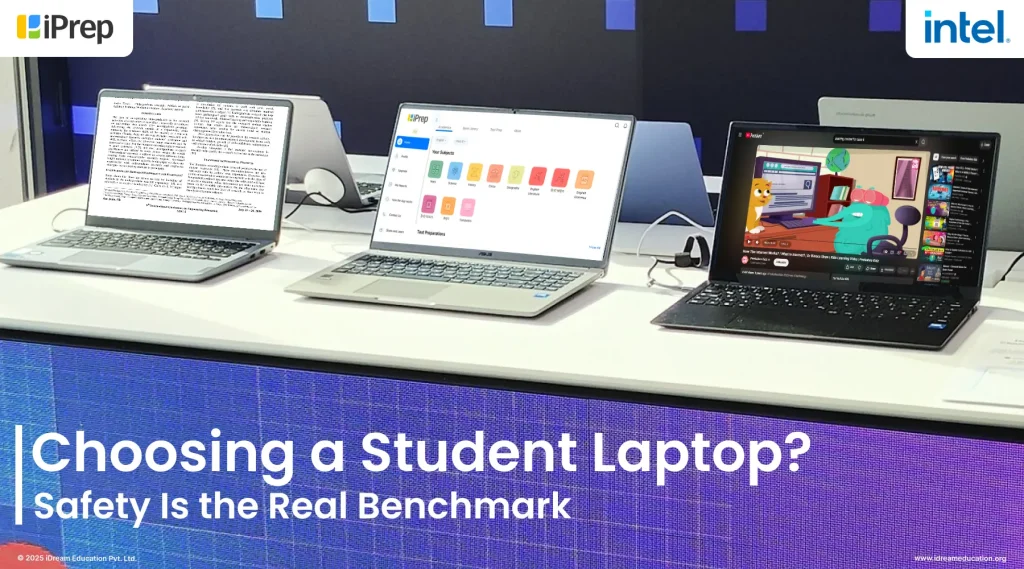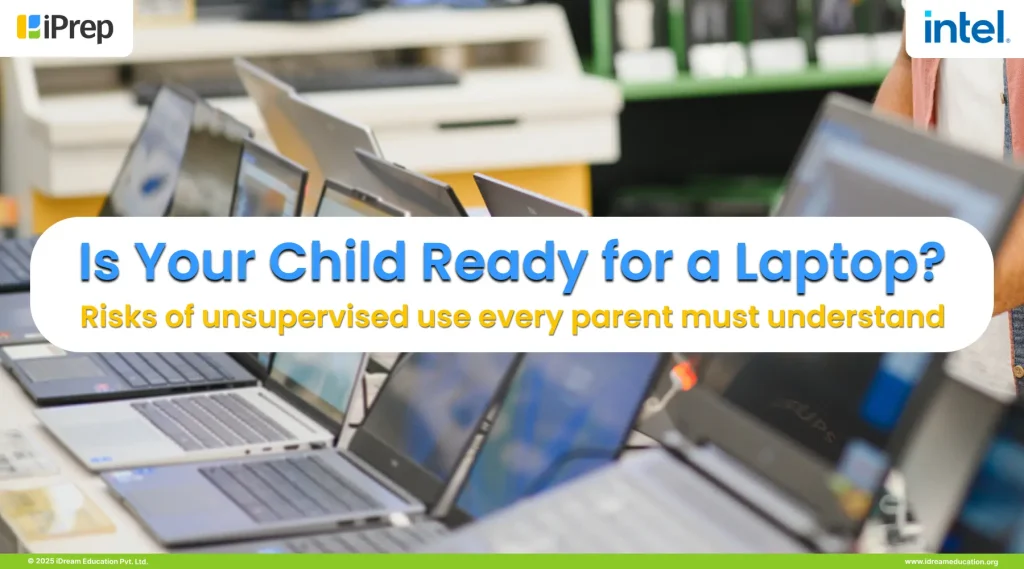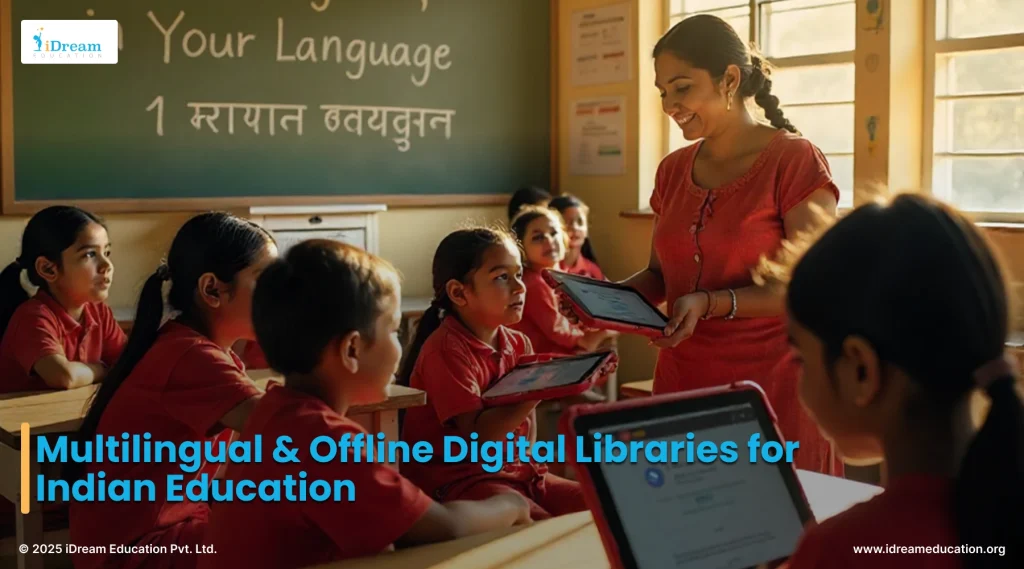
Introduction: Learning through Multilingual and Offline Digital Library Solutions in Indian Education
India’s education system is incredibly diverse, with students speaking many languages and facing unequal access to the internet. This blog explores how multilingual and offline digital library solutions can bridge these gaps by offering localized learning content without depending on connectivity. We dive into practical implementation strategies, case studies from Indian states, and best practices that schools can adopt to make digital learning more inclusive and accessible. Whether you’re an educator, school leader, or policymaker, this guide offers valuable insights to build a resilient and culturally responsive learning ecosystem.
Making Learning Work for Every Language Spoken in the Classroom
India is a country rich in languages and cultures, and this diversity is reflected in every classroom. Many students grow up speaking different mother tongues at home, and not all are equally comfortable with English. This can make it harder for everyone to learn in just one language. That’s where digital libraries with multilingual content can make a real impact. By offering resources in various languages, they make learning more inclusive, accessible, and relatable for every student.
When learning platforms offer content in regional languages like Hindi, Tamil, Bengali, and others, it allows students to connect more easily with the material. Whether it’s storybooks, video lessons, or interactive quizzes, having those resources available in a child’s first language makes learning more comfortable. This language flexibility also supports smoother adoption of digital libraries across regions with distinct linguistic needs. For example, Indian schools benefit greatly from bilingual digital library platforms, where students can switch between English and their home languages seamlessly.
By aligning content to both state and national curricula in multiple languages, digital libraries become powerful tools that respect cultural context while supporting academic goals. This approach promotes equal opportunity for all students regardless of their language background.
Making Digital Libraries Work Without Internet
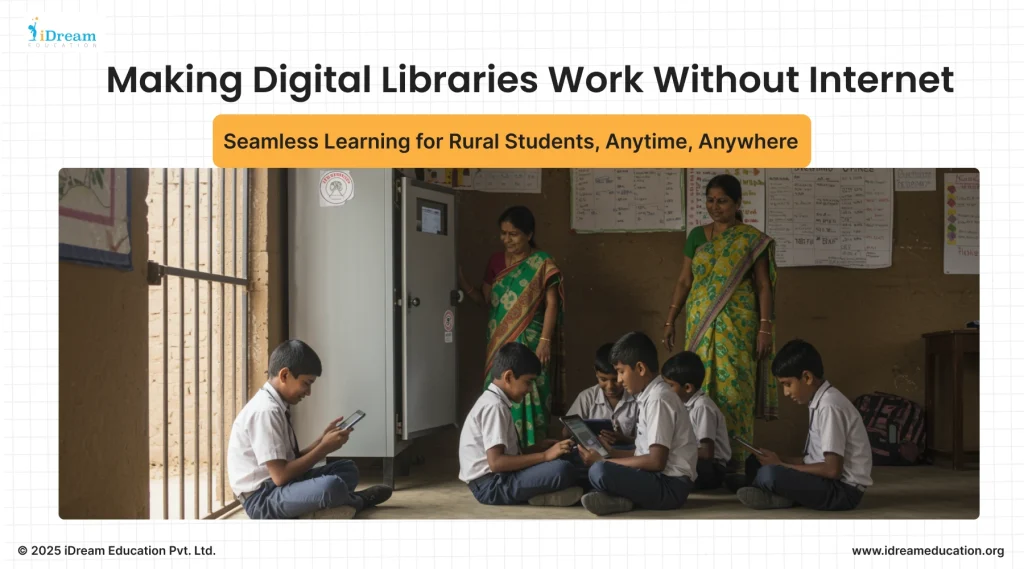
Offline solutions deliver digital content to students in a stable, secure way. Schools use local servers or pre-loaded devices to ensure all resources, like e-books, lessons, quizzes, and videos, are always accessible. When the internet is available, content and software can be updated in a single batch, keeping the library current without daily reliance on a network.
- Local server-based digital libraries let schools distribute large content collections across classrooms, even where regular connectivity isn’t possible. They support group learning and work well for scheduled lessons or self-paced exploration. Explore practical benefits and setup approaches in this detailed overview of local server-based digital libraries.
- Tablets and notebooks preloaded with resources are another effective approach. These devices can be rotated among students or classrooms. When equipped with robust storage and reliable batteries, they serve for long periods without needing to reconnect or recharge online content.
Reducing Operational Costs
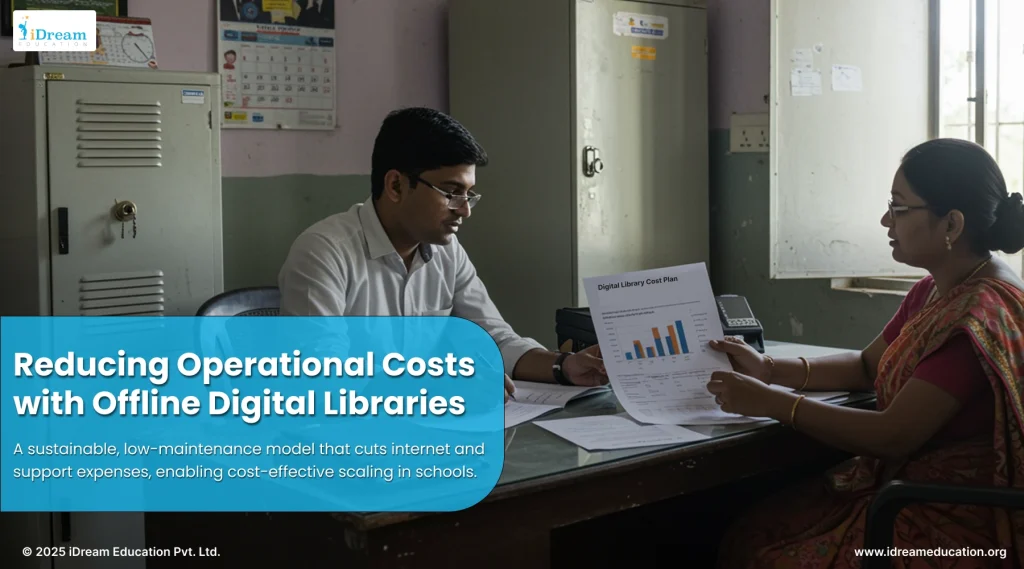
Offline digital libraries also help schools manage costs. By minimizing the need for constant internet use, they reduce data and bandwidth expenses. Maintenance is simplified because updates can be planned and implemented in batches, lowering the support burden on school staff.
Schools that focus on affordable deployment models are able to scale more easily. The practical steps and lessons from these efforts are illustrated in the guide on cost-effective digital library deployment.
Supporting Inclusion and Continuity
Offline resources ensure students keep learning during power cuts, service disruptions, or emergencies. This consistency supports attendance and engagement, particularly in rural or remote schools.
Combining offline capability with curriculum alignment and multilingual resources enables all students, including those in the most challenging settings to access and benefit from digital learning. For more on aligning solutions with diverse classroom needs, see the guide on digital libraries for schools.
Offline digital library models, when thoughtfully implemented, extend the reach of quality education and ensure no student is left behind, regardless of community or background.
Integrating Multilingual and Offline Solutions: Key Steps for Schools
Combining multilingual content and offline access involves deliberate choices that ensure digital libraries truly serve the needs of all learners.
- First, schools should assess the main languages spoken by students and understand their internet access situation. This helps in selecting platforms and technologies that best fit the local context.
- The next step is to choose digital library platforms that offer proven support for multiple languages and curriculum alignment. Many such platforms provide resources mapped to NCERT, CBSE, and state board syllabi, helping teachers easily find relevant materials. More details on this can be found in the digital libraries for schools resource.
- When it comes to devices, opting for tablets, Chromebooks, or notebooks preloaded with content allows students continuous access throughout the school day—even without a live internet connection. This approach ensures learning is not interrupted, and content remains consistent. For practical insights into device-based solutions, see the article on android tablet digital library personalized learning.
- Monitoring how students and teachers use the digital library is another important step. Good platforms include dashboards that track resource usage, helping schools identify popular content and gaps. This data supports informed decisions about content updates and training needs.
- Finally, planned training sessions for teachers and students help build confidence and encourage regular use. This makes sure the technology enhances learning rather than becoming a barrier.
By thoughtfully combining multilingual content with offline capabilities, schools can create digital libraries that are accessible, flexible, and responsive to real classroom needs.
Case Studies: Practical Deployments of Multilingual and Offline Digital Libraries in Indian Schools
Real-world examples highlight how Indian schools have successfully enhanced student access and learning using multilingual and offline digital library solutions. These cases showcase approaches tailored to local challenges including language diversity, infrastructure constraints, and budget realities.
Large-Scale Tablet Libraries in Karnataka
Karnataka has led the way in digital library adoption by deploying tablet-based libraries across hundreds of schools. Typically, each school receives a standardized set of up to 20 tablets, bundled with modular charging racks for ease of use and storage. Classes are scheduled to ensure equitable rotation of devices. This model does not require dedicated computer labs or continuous internet, making it practical for a wide range of settings.
- Teachers receive structured training to integrate digital content into classroom routines.
- Regular usage data enables continuous improvement and classroom adaptation.
- Results have shown improved access to syllabus-aligned resources and increased student engagement, even in areas with limited physical infrastructure.
Offline Digital Libraries for Rural and Low-Connectivity Areas
Many rural schools tackle unreliable or absent internet by installing local server-based digital libraries. These servers house a comprehensive collection of digital content, accessible to devices over the local school network without the need for an internet connection. Content updates are managed through periodic syncs when internet is available.
- This model ensures resources remain available even during days without power or mobile data.
- It supports video lessons, e-books, quizzes, and regional language materials that fit state curriculum standards.
- The offline approach is cost-effective and reduces risk of lesson interruption.
For practical guidance on technical setup and benefits, see this overview of local server-based digital libraries.
Supporting Linguistic Diversity with Bilingual Libraries
Schools in linguistically diverse states such as Bihar and West Bengal are increasingly adopting bilingual digital libraries, which deliver the same content in both English and local languages. This model empowers students to learn and revise in their preferred language, boosting understanding and confidence.
- Teachers can assign activities and find resources aligned to both national and state syllabi in Hindi, Bengali, Tamil, and more.
- Bilingual platforms support smoother transitions for students moving between languages or educational boards.
- Adoption of these libraries is shown to improve comprehension and engagement for learners from different backgrounds.
Case studies and best practices can be explored within the bilingual digital library platform collection, as well as Bihar-specific digital content.
Device-Based Libraries for Personalized Learning
Some schools use preloaded tablets or notebooks, enabling students to access resources anytime in the classroom or library, regardless of network status. The devices come with a broad suite of materials mapped to class and subject, and can be rotated among groups as needed.
- This increases flexibility and serves larger numbers without one-to-one device ownership.
- Content remains fresh through occasional software updates when a connection is available.
- Personalized learning is supported through features like interactive lessons and self-tests.
For more on how tablets are transforming student learning, visit the example of android tablet-based digital libraries.
Best Practices for Success with Multilingual and Offline Digital Libraries
Sustaining the positive impact of digital libraries in Indian schools requires attention to several core best practices. These ensure continued relevance, broad access, and lasting educational benefits.
Engage Teachers and Students from the Start
- Teachers should be involved in selecting content, planning integration, and providing regular feedback. Their buy-in is crucial for daily classroom use.
- Students bring valuable perspectives on usability and language preferences, helping tailor the digital experience for maximum engagement.
Keep Content Fresh and Relevant
- Regularly review and update library resources so they reflect current syllabi, exam patterns, and popular learning themes.
- Use data from the library’s usage dashboards to identify high-demand topics and fill any subject gaps.
Support Multiple Languages and Local Needs
- Ensure content is available in the main languages spoken by the student community, including both English and regional options.
- Multilingual formats, such as those provided by trusted bilingual digital library platforms, make materials accessible to students from diverse backgrounds.
Blend Digital Resources into Everyday Learning
- Encourage teachers to use library content in regular assignments, group projects, and class revisions—not just for extra or remedial work.
- For practical tips, see the guidance in this digital class vs smart class comparison, which explains how best to integrate technology into existing routines.
Monitor and Respond to Feedback
- Consistently track usage patterns and collect feedback from all users.
- Use this information to refine content, select new materials, and guide teacher training priorities.
Provide Ongoing Training and Support
- Offer initial orientation and regular refreshers for teachers and students, equipping them to troubleshoot and make the most of library features.
- Establish clear channels for support, whether through in-house staff or platform providers.
Foster an Inclusive, Growth-Oriented Culture
- Make sure the system and content can flex to support future needs, such as changes in exams, additional languages, or expanding student cohorts.
- Draw inspiration from schools that have implemented affordable digital libraries and continually evolved their digital learning environments with community input.
Following these best practices ensures that a digital library for education remains valuable, adaptable, and central to school life, reaching learners of all backgrounds with relevant and engaging educational content.
Training and Capacity Building for Effective Use
Implementing multilingual and offline digital libraries is just the beginning. To fully realize their benefits, schools must invest time and resources in training both teachers and students.
Empowering Teachers
Teachers are at the heart of any educational innovation. They should receive hands-on training to confidently navigate the digital library interface, locate curriculum-aligned resources, and integrate these materials into their lesson plans. Training sessions should explain features like searching, bookmarking, and tracking student progress through reports.
Supporting teachers with refresher workshops and easy-to-use guides encourages ongoing use. When educators understand how the digital library directly supports classroom goals, they are more likely to embed it into daily teaching routines. Examples of successful teacher engagement strategies appear in the digital class vs smart class insights from iDream Education.
Orienting Students
Students need clear guidance on how to access and use the digital library resources effectively. Orientation sessions can introduce navigation basics, explain how to find materials in multiple languages, and encourage exploration with interactive quizzes or storybooks. This not only builds digital literacy but fosters a positive attitude toward learning with technology.
Encouraging student champions or peer leaders can build momentum and help those less comfortable with digital tools. Android tablet-based libraries with personalized content, as detailed in this tablet digital library resource, show how student-centric training contributes to better outcomes.
Creating a Supportive Environment
Ongoing technical support makes a significant difference. Schools can establish help desks, peer support groups, or quick troubleshooting guides to keep usage smooth and frustration low. Training combined with accessible support helps keep the momentum going and signals a commitment to sustained learning improvements.
This investment in capacity building ensures that digital library solutions deliver real educational value beyond initial implementation.
Monitoring and Evaluation for Sustained Impact
To ensure that multilingual and offline digital library solutions continue to serve their purpose effectively, regular monitoring and evaluation are essential. These practices help schools understand usage patterns, assess learning outcomes, and make informed decisions about improvements.
Tracking Usage and Engagement
Digital libraries often include built-in dashboards that provide data on how frequently materials are accessed, which subjects or language versions are most popular, and the average time students spend using resources. Schools should review these reports regularly to identify trends and gaps.
Such analytics enable educators to tailor content usage, focus training where needed, and encourage wider adoption. For more on leveraging data for offline digital library success, see related insights in the affordable digital library for schools resource.
Assessing Learning Outcomes
Beyond usage, it is important to measure the impact on student learning. This can be done through comparing performance in assessments before and after digital library introduction, collecting teacher feedback, and reviewing student engagement levels.
Evaluations help refine content selection, identify underused resources, and adjust support strategies. They also provide evidence to stakeholders about the value of continued investment in digital libraries.
Continuous Feedback Loop
Creating channels for ongoing feedback from teachers, students, and parents ensures that the library evolves with user needs. Regular meetings, surveys, or suggestion boxes encourage community participation and ownership.
Feedback, along with monitoring data, allows schools to stay responsive and keep the digital library relevant.
Planning for Growth and Updates
Schools should anticipate the need for updates, not just technical but also pedagogical. This includes refreshing content to match syllabus changes and adding new language materials as demographics evolve.
Well-planned monitoring and evaluation cycles enable sustainable growth and long-term success in digital learning initiatives.
Planning for Growth and Future-Proofing Digital Library Solutions
Long-term success with multilingual and offline digital libraries depends on thoughtful strategies that support growth, adaptability, and evolving educational needs. Schools should view digital libraries as living systems that require ongoing development and responsiveness.
Anticipating Future Content and Technology Needs
- Regularly update library materials to reflect syllabus changes, educational trends, and emerging student interests.
- Expand language offerings as demographics shift, ensuring every student can access resources in their preferred medium.
- Stay informed about advances in digital platforms, devices, and offline solutions so the library remains compatible with future classroom technologies.
Building Community and Stakeholder Support
- Engage teachers, students, parents, and local organizations in shaping the digital library’s direction.
- Encourage shared ownership by creating opportunities for feedback and collaboration when selecting new content or devices.
- Highlight success stories and practical benefits within the school community to sustain enthusiasm and support.
Leveraging Networks and Partnerships
- Connect with schools, districts, and education experts to share CSR programme ideas and best practices on digital libraries, fostering collaboration and resource exchange.
- Tap into collaborations with government programs, edtech partners, or education based NGO that offer funding, content, or technical assistance.
- For guidance on structuring larger partnerships or scaling initiatives, refer to practical examples in the digital library implementation guide.
- Learn from the best CSR programmes that have successfully integrated the best digital library for schools into their community outreach, ensuring sustainable and inclusive learning access.
Focusing on growth, adaptability, and inclusive planning ensures that multilingual and offline digital library solutions continue to meet the needs of Indian students well into the future. This approach positions schools to deliver quality, equitable digital education as curriculum standards and community priorities evolve.
Conclusion
Adopting multilingual and offline digital library solutions is a practical and impactful way to increase learning access for students across India. By selecting platforms that offer resources in regional languages and ensure content is always available—even without internet—schools can bridge gaps that often separate urban and rural learners.
The most successful digital libraries in Indian schools share key qualities. They support the languages used by students, integrate directly with daily lessons, and update content regularly to keep pace with evolving curriculum needs. Teachers and students are engaged at every stage, from planning and training to regular feedback and review.
Affordable deployment models and offline-first approaches help schools manage costs and provide continuous learning, even when resources or connectivity are limited. Real-world examples from Karnataka, Bihar, and other regions show that with careful planning and sustained support, digital libraries become a foundation for inclusive, equitable, and high-quality education.
Schools that prioritize these best practices ensure their offline digital libraries remain valuable tools year after year, allowing every student to explore, learn, and grow.
For more information, you may contact us at +917678265039. You can also write to us at share@idreameducation.org or share your details here.


